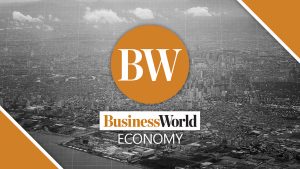By Beatriz Marie D. Cruz, Reporter
THE Philippine government needs to implement additional fiscal, agricultural, and energy reforms to stimulate growth, according to some analysts.
“While GDP (gross domestic product) remains positive, this is a result of the gains or victories on reforms achieved in previous administrations. The current administration is not building on these gains,” Filomeno S. Sta. Ana III, cofounder and coordinator of the Action for Economic Reforms, said in a Viber message.
“It must assert a new generation of reforms covering fiscal policy (taxes and spending), reform of military and uniformed personnel pensions, food and agriculture policy, energy policy, among other things.”
GDP growth in the second quarter was likely slower at 5.5% compared to the first three months of the year due to base effects, said Pantheon Macroeconomics Chief Emerging Asia Economist Miguel Chanco.
“A modest slip in the headline rate would be quite disappointing, given the favorable base effects in domestic demand; recall that private consumption, public spending, and fixed investment contracted quarter on quarter in Q2 last year,” he said in an e-mail.
“Sequentially, we suspect that the economy lost more momentum in the second quarter this year, shrinking by roughly 0.5% quarter on quarter,” Mr. Chanco said, citing a “pullback” from state spending and fixed investment.
The Philippine economy would likely hinge on household spending, supported by moderating inflation and easing monetary policy, to meet its growth prospects for the remainder of the year, Asian Development Bank Country Director for the Philippines Pavit Ramachandran said in an e-mail.
The Bangko Sentral ng Pilipinas (BSP) has kept its key rate at a 17-year high of 6.5% since October 2023 to tame inflation.
BSP Governor Eli M. Remolona, Jr. has signaled a potential rate cut as early as August, as inflation continues to cool.
However, risks from geopolitical tensions and volatility in global commodity prices pose risks to the outlook.
The ADB has kept its Philippines GDP forecast at 6% this year and 6.2% next year, both within the government’s 6-7% and 6.5-7.5% respective targets.
The Philippine Statistics Authority will release second-quarter GDP data on Aug. 8.
